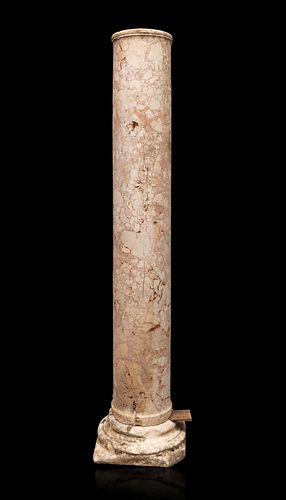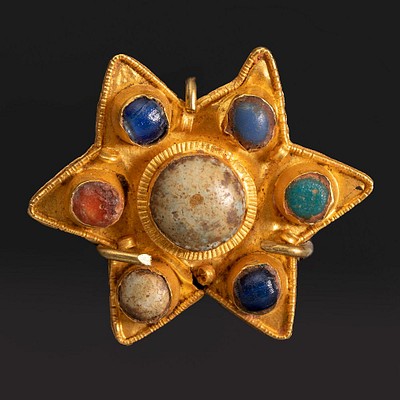Roman column; Empire period; I-II centuries A.D. Marble.
Lot 8
About Seller
Setdart Auction House
Carrer Aragó 346
Barcelona
Spain
Setdart Subastas was born in 2004 and is currently the first online art auction in Spain with solidity, prestige and reliability guaranteed by our more than 60,000 users. Setdart has a young, dynamic and enterprising team ready to successfully manage the purchase and sale of art works through custom...Read more
Estimate:
EUR€10,000 - EUR€15,000
$10,752.69 - $16,129.03
Absentee vs Live bid
Two ways to bid:
- Leave a max absentee bid and the platform will bid on your behalf up to your maximum bid during the live auction.
- Bid live during the auction and your bids will be submitted real-time to the auctioneer.
Bid Increments
| Price | Bid Increment |
|---|---|
| EUR€0 | EUR€10 |
| EUR€200 | EUR€25 |
| EUR€500 | EUR€50 |
| EUR€1,000 | EUR€100 |
| EUR€3,000 | EUR€200 |
| EUR€5,000 | EUR€500 |
| EUR€10,000 | EUR€1,000 |
| EUR€20,000 | EUR€2,000 |
| EUR€50,000 | EUR€5,000 |
About Auction
By Setdart Auction House
Dec 21, 2021
Set Reminder
2021-12-21 07:30:00
2021-12-21 07:30:00
America/New_York
Bidsquare
Bidsquare : Córdoba: 2,000 Years of Art
https://www.bidsquare.com/auctions/setdart-auction-house/c-rdoba-2-000-years-of-art-8049
Setdart Auction House sofia@setdart.com
Setdart Auction House sofia@setdart.com
- Lot Description
Roman column; Empire period; I-II centuries A.D. Marble. Measurements: 199 x 45 x 45 cm. Roman column from the Imperial period that presents a classic design based on the aesthetic patterns imposed during the 5th century B.C., with a square base that presents bull and scotch and even the bocel. In the case of the shaft, which stands out for its great height, the characteristic grooves are not appreciated, but presents a smooth shaft of great expressiveness due to the veins of the material, close to the example of columns that are in the Mosque of Cordoba, and Medina Azahara. Regarding the base, it is worth mentioning that, due to its technical characteristics, it denotes that it belongs to the Tuscan order. The Tuscan was an Etruscan contribution to the Greek classical orders, derived from the Doric, of which it is a simplification, and which was used in Etruria during the period before the Greek conquest. It was an order later adopted by the Romans, to whom we owe its diffusion. With the passage of time, since Renaissance architects knew Roman art much better than Greek art, the Tuscan order was very common from the 15th century onwards. It is characterized by the following elements, all present in these columns: a capital with listel, abacus, equino, collarino and baqueton; and a column with a smooth shaft, which rests on a base, and this on a podium, unlike the Greek Doric. The piece, from the Roman period, is of Andalusian origin. The Roman domination in the territory of southern Spain was influenced by the victory of the Second Punic War over Carthage. After the withdrawal of the Carthaginians, the Romans founded Hispania Ulterior and Hispania Citerior in the peninsula. It was with the mandate of Emperor Augustus when the province of Baetica was conceived, which together with Lusitania and Tarraco formed the three imperial territories. In the case of Andalusia, the province of Baetica was characterized by its easy adoption of Romanization at a socio-economic and cultural level. It became one of the areas with the greatest splendor and development thanks to its wealth in raw materials. This splendor was rewarded by Emperor Vespasian, who gave the population the rights of Latin citizens.
- Shipping Info
-
In-house shipping available. Please inquire at admin@setdart.com.
-
- Buyer's Premium



 EUR
EUR CAD
CAD AUD
AUD GBP
GBP MXN
MXN HKD
HKD CNY
CNY MYR
MYR SEK
SEK SGD
SGD CHF
CHF THB
THB
















